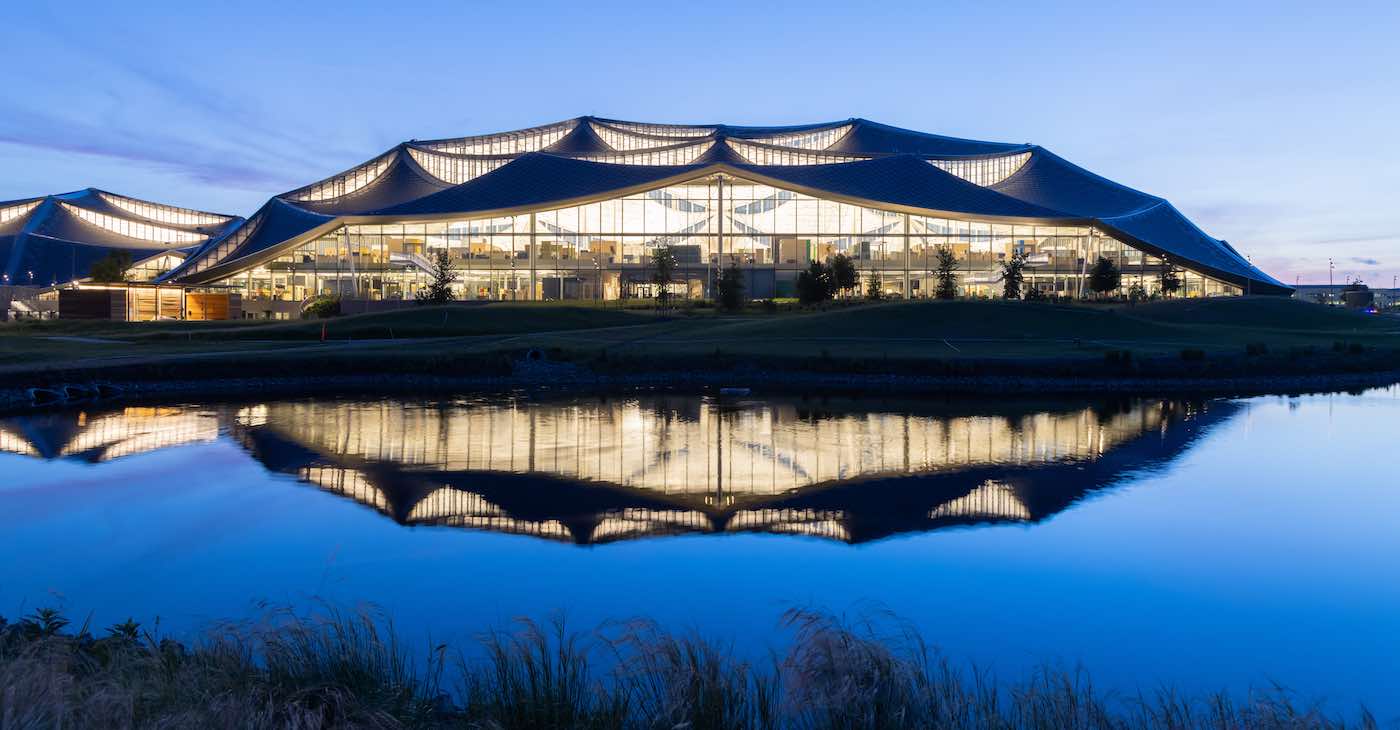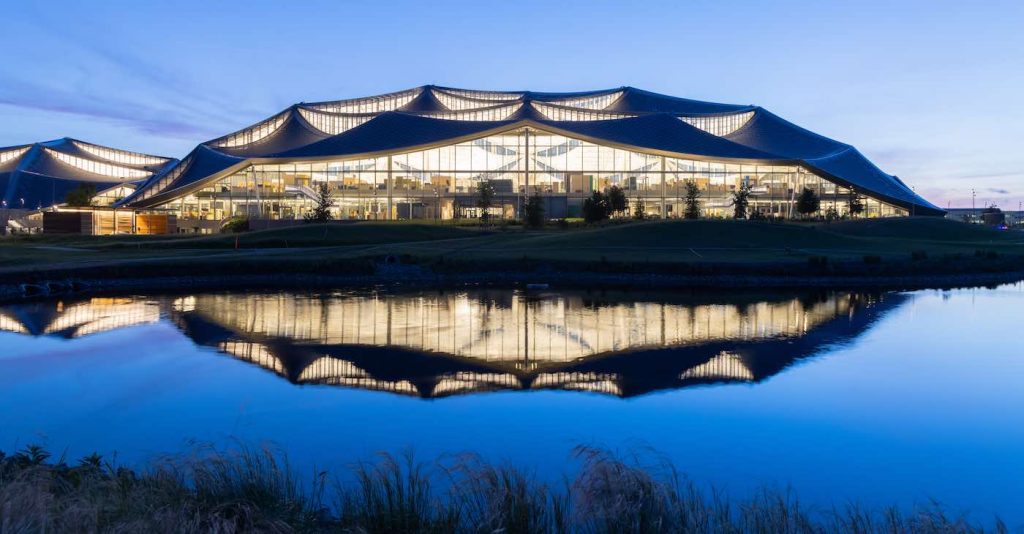
A new Google campus in California is fulfilling its goal of working with green energy 90% of the time—in part by powering its building with solar panels inspired by ‘dragon skin’.
The Bay View campus in Mountain View opened this month to employees on 42 acres in Silicon Valley.
Designed by architects at Bjarke Ingels Group and Heatherwick Studio—as well as Google’s design and engineering teams—two sun drenched office buildings take up 1.1 million square feet covered by 90,000 silver solar panels.
“This is the first time we designed and developed one of our major campuses, which allowed us to rethink the very idea of an office and what’s possible for the building industry,” said the company on its blog. “The result is a set of buildings that show what’s possible in human-centered and sustainable workplace design.”
To help deliver on its commitment to operate every hour of every day on carbon-free energy by 2030, the “first-of-its-kind dragonscale solar skin”, as well as nearby wind farms, will power the campus on carbon-free energy 90% of the time.
The dragonscale roof has the capacity to generate nearly 7 megawatts of energy.
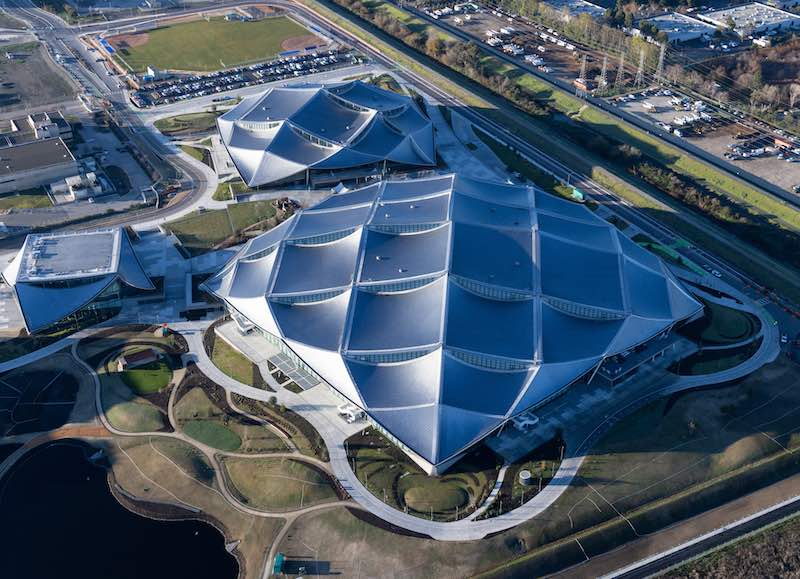
“The prismatic nature of the glass ‘traps’ the light that would normally escape from traditional flat solar panels and reduces reflective glare that can be a problem for drivers and pilots,” explains Asim Tahir, Google District & Renewable Energy Lead.
POPULAR: Scientists Powering Tesla on 9,400-mile Journey With Rolled-up Printed Solar Panels
Elsewhere, an integrated geothermal pile system (the largest in North America) is estimated to reduce carbon emissions by roughly 50% and will help both heat and cool the campus. The massive geoexchange field is integrated into the structural system, reducing the amount of water typically used for cooling by 90%, equal to five million gallons of water annually.
“Bay View is 100% electric where even the kitchens are electric to decrease carbon emissions,” say the tech giant.
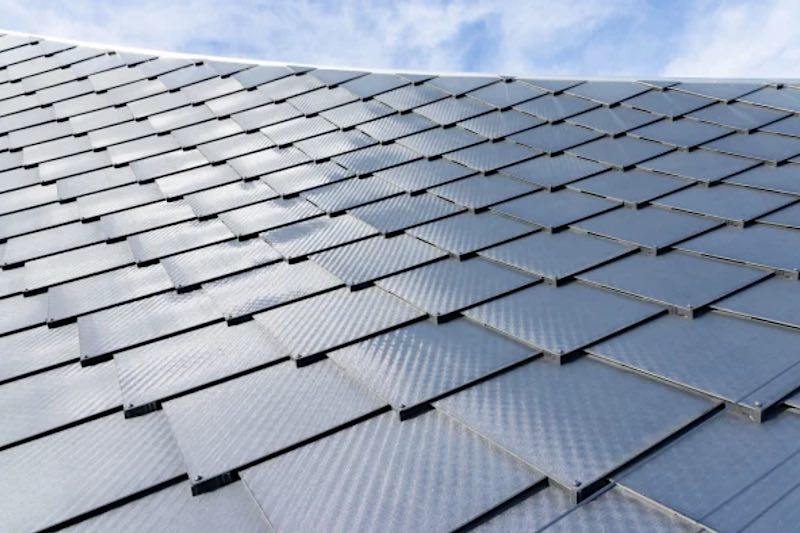
Google says the interior of the buildings reemphasized their vision for the future of work. It was designed to balance Googlers’ desire to come together as teams with the need for a quiet environment that enables deep-focus work.
The campus incorporates biophilic design principles, including greenery, natural daylight and views outside from every desk to improve the health and wellbeing of those inside the building. Clerestory windows modulate direct light onto desks with automated window shades that open and close over the course of the day.
The ventilation system uses 100% outside air. This means air flows one way, so there is no recycled air, which is much healthier for occupants.
To remove toxins and create the healthiest environment possible, the project team vetted thousands of building products and materials — everything from carpet tiles, paints, piping, plywood and furniture were evaluated using the Living Building Challenge (LBC) Red List as a framework.
To help deliver on its commitment to replenish 120% of the water it consumes by 2030, the site is net water-positive with all non-potable water demands being met using the recycled water it generates on site.
A series of above-ground ponds gather rainwater, combined with a building wastewater treatment system, together serve as a water source for cooling towers, flushing toilets, and landscape irrigation.
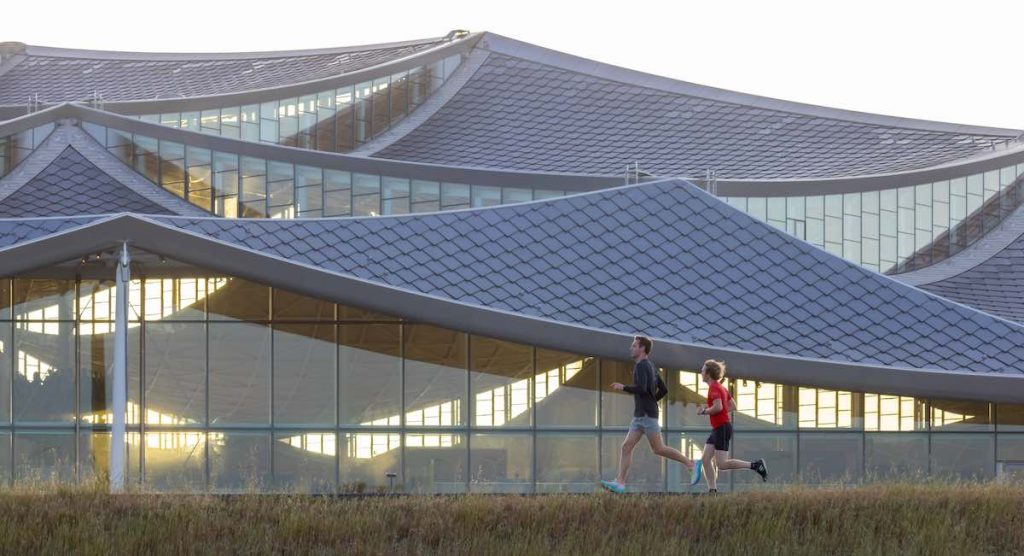
The campus includes 7.3 acres of high-value natural areas—including wet meadows, woodlands, and marsh—that contribute to Google’s broader efforts to reestablish missing essential habitat in the Bay Area.
CHECK OUT: California Erects Solar Panels Over Canal to Save Huge Supply of Water From Evaporation
Sustainability at the Bay View campus is expected to earn a LEED-NC v4 Platinum certification and become the largest facility ever to attain the International Living Future Institute LBC Water Petal Certification.
Local residents can also benefit from the opening of the Bay View campus, including public access to expanded trails with panoramic views of the Bay, improved bike connections to Stevens Creek and Bay trails, and new bike lanes with the widening of R.T. Jones Road.
HAIL This Architectural Progress By Sharing it on Social Media…




















